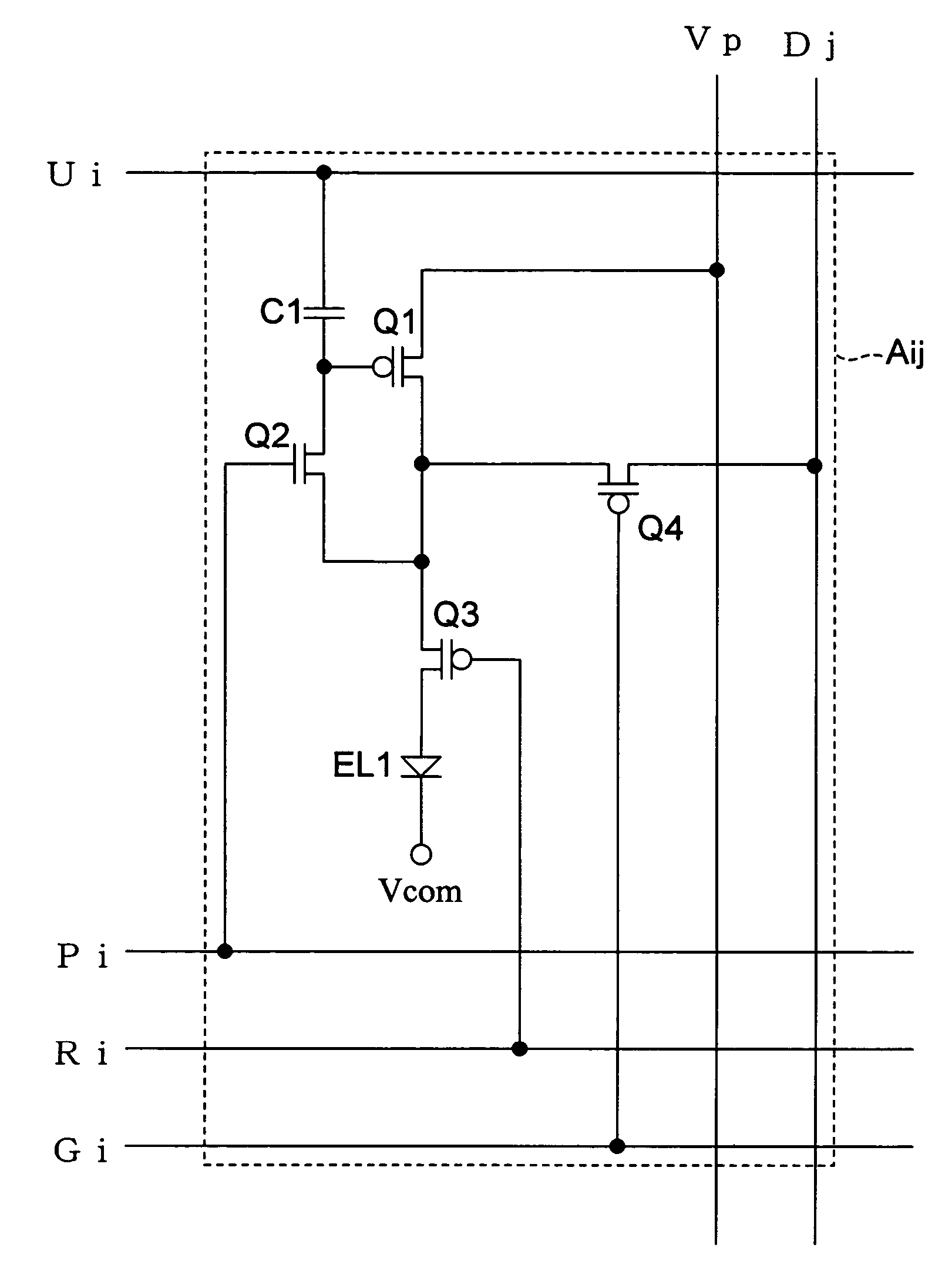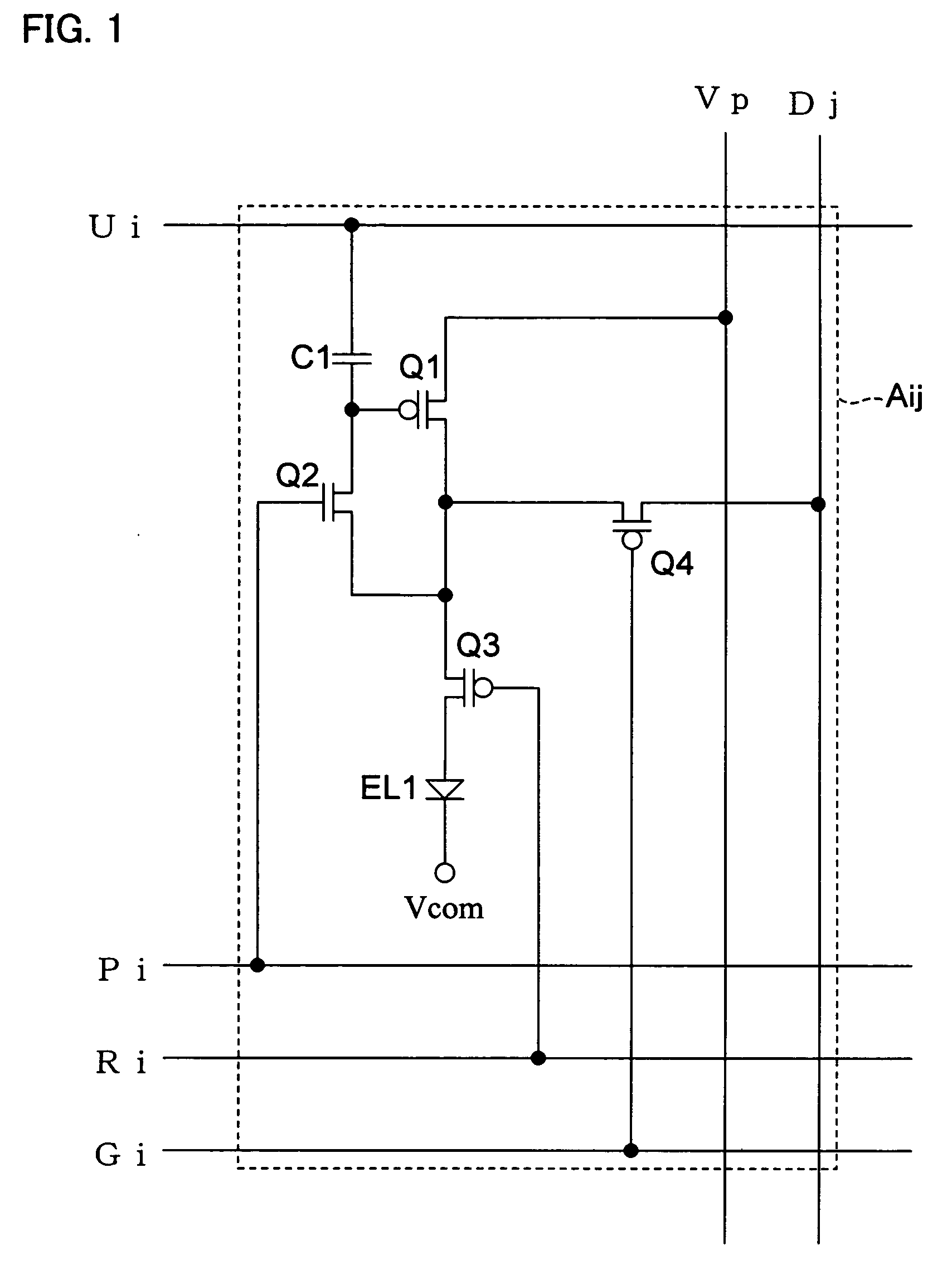Display device and method for driving the same
- Summary
- Abstract
- Description
- Claims
- Application Information
AI Technical Summary
Benefits of technology
Problems solved by technology
Method used
Image
Examples
first embodiment
[0060] In the present embodiment, a first example of a display device of the present invention will be described.
[0061] A display device1 of the present embodiment, as shown in FIG. 2, has pixel circuits Aij (i=1 to n, j=1 to m), gate drivers 3 and 8, a source driver 2, and a potential generating section 11. The pixel circuits Aij are disposed in a matrix manner. The gate drivers 3 and 8 and a source driver circuit 2 serve as a wiring control circuit for the pixel circuits Aij. The potential generating section 11 serves as an internal voltage generating circuit.
[0062] Each of the pixel circuits Aij is disposed in a region where a data wire Dj and a gate wire Gi intersect with each other. Further, the source driver circuit 2 includes an m-bit shift register 4, an m-bit register 5, an m-bit latch 6, and m-number of analog switch circuits 7.
[0063] In the source driver circuit 2, a first register of the m-bit shift register 4 receives a start pulse SP, and the start pulse SP is trans...
second embodiment
[0116] In the present embodiment, a second example of the display device according to the present invention will be described.
[0117] Since a display device 1 according to the present embodiment also has the same arrangement as shown in FIG. 2, the description is omitted.
[0118]FIG. 11 shows an arrangement of a pixel circuit Aij according to the present embodiment.
[0119] The pixel circuit Aij has an n-type switching TFT: Q5 (fourth switching transistor) disposed between a gate terminal (current control terminal) of a driving TFT: Q1 (driving transistor) and a data wire Dj instead of the switching TFT: Q4 (third switching transistor) of the pixel circuit Aij of FIG. 1. Since the pixel circuit of FIG. 11 is the same as the pixel circuit of FIG. 1 otherwise, a further description thereof is omitted here.
[0120] Operation of the pixel circuit Aij will be described below with reference to a timing chart of FIG. 12.
[0121] In FIG. 12, Ui, G1, Ri, and Pi correspond to the pixel circuit Ai...
third embodiment
[0143] In the present embodiment, a third example of the display device according to the present invention will be described.
[0144] Since a display device 1 according to the present embodiment also has the same arrangement as shown in FIG. 2, the description thereof is omitted.
[0145]FIG. 15 shows an arrangement of a pixel circuit Aij according to the present embodiment.
[0146] The pixel circuit Aij has a capacitor C3 (second capacitor) provided between a drain terminal (current output terminal) of a driving TFT: Q1 (driving transistor) and a data wire Dj instead of the switching TFT: Q4 (third switching transistor) of the pixel circuit Aij of FIG. 1. Further, the gate wire Gi for controlling a gate voltage of the switching TFT: Q4 is also removed. Since the pixel circuit of FIG. 15 is the same as the pixel circuit of FIG. 1 otherwise, a further description thereof is omitted here.
[0147] Operation of the pixel circuit Aij will be described below with reference to a timing chart of...
PUM
 Login to View More
Login to View More Abstract
Description
Claims
Application Information
 Login to View More
Login to View More - R&D
- Intellectual Property
- Life Sciences
- Materials
- Tech Scout
- Unparalleled Data Quality
- Higher Quality Content
- 60% Fewer Hallucinations
Browse by: Latest US Patents, China's latest patents, Technical Efficacy Thesaurus, Application Domain, Technology Topic, Popular Technical Reports.
© 2025 PatSnap. All rights reserved.Legal|Privacy policy|Modern Slavery Act Transparency Statement|Sitemap|About US| Contact US: help@patsnap.com



